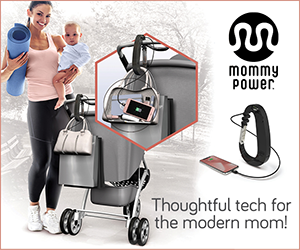Baby Proofing 101
As parents, we all look forward to the day our baby starts crawling and then walking. It’s such an exciting time. But the minute your baby becomes mobile, it’s time to begin the process of baby proofing your home. Baby proofing your home is essential to keeping your baby safe. Be prepared to baby proof the nursery, bathroom, kitchen, stairs, fireplace, and any furniture that could harm your child. You can even hire a professional child proofer to do the job for you. After seven kids, I’ve done a lot of baby proofing as a parent. Here are a few tips to help you in the process:
Baby Proofing Must Haves:
- Spout cover for the bathtub
- Door stop edges to prevent doors slamming on little fingers
- Corner guards for the coffee table and fireplace
- Toilet seat lid lock
- Outlet cover plugs or sliding switch outlets
- Door knob locks to keep your little one out of off-limit rooms
- Cabinet and door latches
- Baby gates for stairs and areas that are off-limits
- Safety straps/bolts for attaching dressers, bookshelves, and TV’s to the wall.
- Radon, lead & carbon monoxide tests/detectors
Getting Started Baby Proofing:
- Get Your Baby’s Perspective. Get down on your hands and knees and check out the view. The most effective way to ensure your baby’s safety is to take a baby’s-eye view of your home.
- If it’s Hazardous, Lock it Up. Carefully lock up every potential poison, cleaning products, medicines, vitamins, and knives/sharp items. Use baby gates to limit your child’s access to areas of your home that might contain dangerous items such as a work area. Carefully dispose of old or outdated meds and watch out for hidden poisons in products.
- Watch Out For “Chokeables.” If you have other children in the house that leave stuff laying around, always keep your eyes open for items your baby could choke on such as small toys, beads, coins, marbles, etc. If they don’t put it in their mouth, the nose is always the next best thing.
- If It Can Tip, Bolt it Down. Thousands of accidents happen every year in the U.S. from large or heavy bookcases, dressers, and appliances falling on kids. Bolt whatever you can to the wall. Push items like televisions back from the edge of the furniture they’re on or move them out of reach, and then secure them, too. Keep dresser drawers and cabinet drawers shut. They make perfect ladders for little ones.
- The All Mighty Safety Gate. The first safety item most parents purchase is the safety gate. They keep your little one within a designated room, and they block access to dangerous stairways and off-limit rooms (such as the bathroom or kitchen). The best gates are the ones that screw into the wall and have gate doors that open with a lever (never requiring an adult or child to have to climb over it). And never use pressure gates at the top of stairs as it poses another safety hazard if pushed.
- Check Cords on Blinds and Curtains. The sad truth is a child can become entangled in a looped window cord and strangle themselves in a matter of minutes. Use cordless window coverings wherever possible, and avoid placing your baby’s crib near a window. If you have curtains with pull cords in your home, either cut off the pull cords or use cord shorteners or wind-ups to keep them out of reach.
- Secure Your Windows & Doors. April is National Window Safety Month, and reminds us to prevent accidents in the home from windows. Always open double-hung windows from the top or fit them with locks to prevent small children from opening them. Low windows shouldn’t open more than 4”—window stops are available that can prevent windows from opening more than this. Window screens are not strong enough to prevent falls. To make windows safe, install window stops or window guards, which screw into the side of a window frame, have bars no more than four inches apart, and can be adjusted to fit windows of many different sizes. Always keep furniture and beds away from windows.
- The 3 Home Imposters—Lead, Radon & Carbon Monoxide. Well before your baby is even born, consider having these tests done in your home. Lead, radon and carbon monoxide each silently and severely affect the health of not only your baby, but the rest of your family, too. Simple home tests can be purchased at your local home improvement store that can check for radon levels. Once results are available, you’ll know whether your radon level requires mitigation. A carbon monoxide detector is a simple detector, much like a fire detector, that plugs into an outlet and remains there—one on every level of your home is recommended. Call a state certified assessor or inspector to have your lead levels checked in homes built before 1978.
- The Scoop on Emergency Numbers. Always keep important emergency phone numbers near your phone or placed somewhere visible, like attached to your refrigerator. Have every number listed including emergency, poison control, pediatrician, etc.
Baby proofing your home is an important job for the safety and well-being of your child, but keep in mind the best device is your supervision. And remember, as your baby grows, baby proofing will have to be re-evaluated a few times over.
Be safe and happy parenting!
Sincerely,
Daddy Nickell
Daddy Nickell, father of 7, founder of Daddy & Co. and the Daily Daddy Blog.




